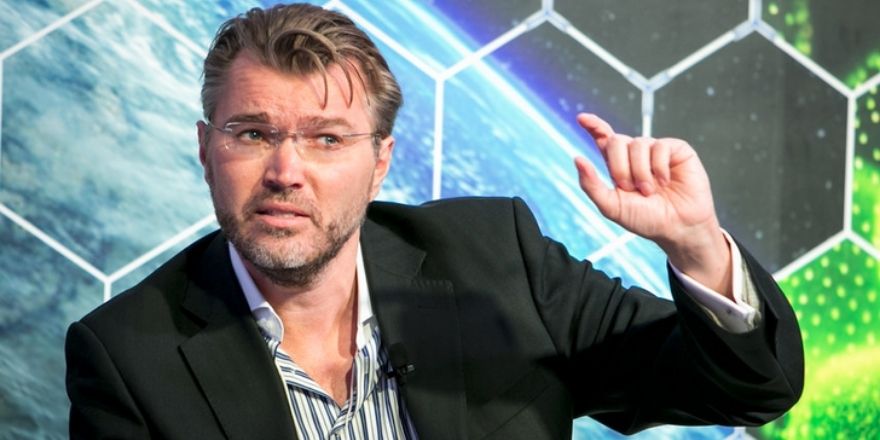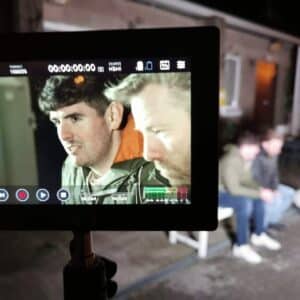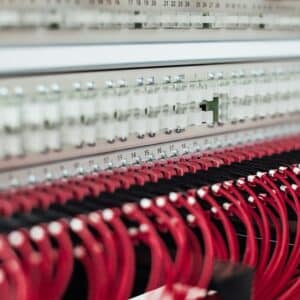Eminent physicist, Professor Vlatko Vedral FInstP, Professor of Quantum Information Science at University of Oxford will deliver the 2020 John Bell Day Lecture.
This lecture series is hosted by the Chief Executives’ Club at Queen’s and the Royal Irish Academy, and supported by the Queen’s School of Mathematics and Physics to celebrate John Bell Day. The event will take place online Wednesday, November 4, 2020, 13:30 – 15:30.
2020 John Bell Day Lecture: Quantum Reality
1.30pm – Introduction from Professor Chris Johnson, Pro-Vice-Chancellor for the Faculty of Engineering and Physical Sciences, Queen’s University Belfast
1.35pm – ‘Quantum Reality’ – Keynote address from Professor Vlatko Vedral FInstP, Professor of Quantum Information Science at University of Oxford
2.10pm – Q&A Session, hosted by Professor Mauro Paternostro, Head of School of Maths and Physics, Queen’s University Belfast
2.45pm – Closing of session, Dr Mary Canning, President of the Royal Irish Academy
Register here.
About the Speaker
Vlatko Vedral FInstP is a Serbian-born physicist and Professor in the Department of Physics at the University of Oxford and Centre for Quantum Technologies (CQT) at the National University of Singapore and a Fellow of Wolfson College, Oxford.
He is known for his research on the theory of Entanglement and Quantum Information Theory. As of 2017 he has published over 280 research papers in quantum mechanics and quantum information and was awarded the Royal Society Wolfson Research Merit Award in 2007. He has held a Lectureship and Readership at Imperial College, a Professorship at Leeds and visiting professorships in Vienna, Singapore (NUS) and at the Perimeter Institute for Theoretical Physics in Canada. As of 2017 there are over 18,000 citations of Vedral’s research papers. He is the author of several books, including Decoding Reality.
About John Bell
John Stewart Bell – The man who proved Einstein wrong
Bell, John Stewart (1928–90), physicist, was born 28 July 1928 in Belfast, second child among one daughter and three sons of John Bell and Annie Bell (née Brownlee) of Tate’s Avenue, Belfast. Both families were of Scottish protestant extraction. Although his father had left school at 12, his mother saw education as a route to a fulfilling life and encouraged her children. However, means were limited and only John was able to stay at school over 14 years of age. He was educated at Old Ulsterville elementary school and Fane St. secondary school before attending the Belfast Technical College, where an academic curriculum, combined with practical courses, provided a sound basis for his future interests in practical and fundamental aspects of science. His interest in books and science from an early age earned him the nickname ‘the prof.’ at home. At the age of 16 (1944) he began working as a junior laboratory assistant in the physics department of QUB under its professors Karl Emelaus and Robert Sloane. Recognising his ability, they encouraged him to attend first-year lectures. The following year, with money saved from his job and some extra support, he enrolled for a degree course. A scholarship was later awarded and he graduated with a first-class degree in experimental physics (1948), staying on to achieve a second degree in mathematical physics (1949). He was particularly interested in quantum mechanics, and encouraged by the crystallographer Paul Peter Ewald (qv), who taught him in his last year at QUB, he applied for a position at the Atomic Energy Research Establishment at Harwell, near Oxford (1949). There he worked under Klaus Fuchs (later arrested for espionage, 1950) on reactor physics before moving to Malvern to work on accelerator design. Here he met Mary Ross, a member of the design group, and they began a collaboration that lasted his lifetime, marrying in 1954.
In 1951 he was given leave of absence to work with Rudolf Peirls in the department of mathematical physics at Birmingham University, where he developed his version of the CPT theorem of quantum field theory (‘Time reversal in field theory’, Proc. R. Soc. Lond. (1955), A 231, 479–95) for which, with some additional work, he later gained his Ph.D. (1956). Unfortunately, the same theorem was published simultaneously by the renowned physicists Gerhard Lüders and Wolfgang Paulii, who received all the credit. Bell returned (1954) to Harwell to a newly set-up group to study elementary particle physics. Unhappy with the gradually more applied nature of the group’s work, he and Mary moved (1960) to the Centre for European Nuclear Research (CERN) in Geneva, where they could both continue pursuing their research interests; she on accelerator design and he on high energy physics, accelerator physics, and what he called his ‘hobby’, quantum measurement theory.
He published around eighty papers in high-energy physics and quantum field theory. In 1964 he published his greatest contribution to quantum theory, ‘On the Einstein Podolsky Rosen paradox’ (Physics, 1, 195–200), what he called his ‘non-locality theory’, which showed the potential for detecting instantaneous communication between sub-atomic particles that are far apart. This deviates from Einstein’s relativity theory, where nothing travels faster than the speed of light. Although his paper was at first ignored, it was taken on board by the physics community. The theory was experimentally tested and came to be known as ‘Bell’s inequality’ or ‘Bell’s theorem’, a proof of quantum theory that reopened to experiment the fundamental basis of physics. Henry Stapp of the Lawrence National Berkeley Laboratory, California, called his result ‘the most profound discovery of science’ (H. Stapp, ‘Are superluminal connections necessary?’, Nuova Cimento (1977), xl B, 191–205). Another of Bell’s papers discredited an earlier ‘proof’ by von Neumann of the impossibility of adding hidden variables to the theory of quantum mechanics.
Bell’s pioneering work had an enormous influence on subsequent developments in quantum theory, quantum experiments, and quantum technology. A collection of his own views on quantum philosophy was published in Speakable and unspeakable in quantum mechanics (1987) and presented with humorous illustrations. A list of his publications is found in Biographical Memoirs of Fellows of the Royal Society (1999).
He received many honours in his life, mostly at the latter end of his career; FRS (1972), Reality Foundation Prize (1982), honorary foreign member of the American Academy of Arts and Sciences (1987), the Dirac medal of the Institute of Physics (1988), honorary D.Sc. from QUB (1988) and TCD (1988), the Heinman prize of the American Physical Society, and the Hughes medal of the Royal Society (1989).
Unassuming and modest about his own work, he is remembered for his intellectual precision, integrity, and generosity, as well as a keen Ulster sense of humour. An incisive critic, he could be irritated by those less rigorous in their views of quantum physics than himself. He was a frequent visitor to Belfast, where his family remained. His younger brother David, after studying at night, qualified as an electrical engineer and became a professor at Lambton College, Canada, where he wrote several textbooks.
Why Do the Numbers of Girls Studying Physics at Leaving Cert Level Remain so Low?
Interested in Physics? Take a look at third-level course around the country here.












Comments